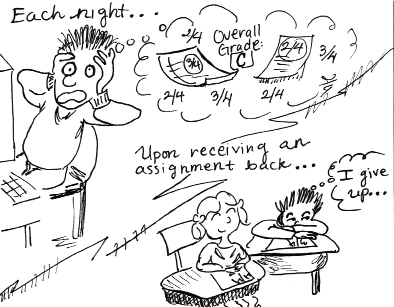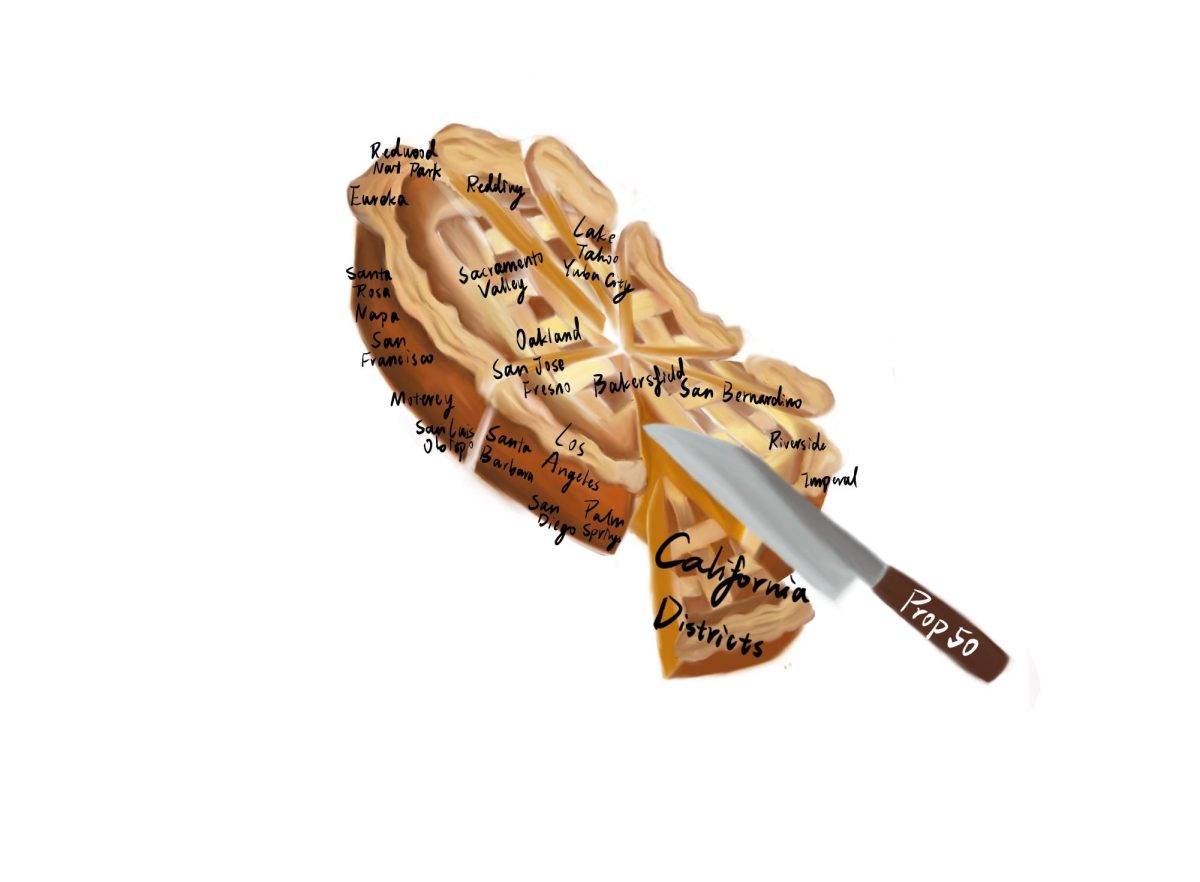Teachers Fail to Make the Grade in Following Traditional Point System
January 7, 2014
Whether it be in elementary or high school, teachers are always switching out the traditional grading scale of A, B, C, D, and F with their own preferred method. These include the 0 through 4 number system and the check system. These new scales are the cause of many unfair grade fluctuations with their absurd weighting of assignments and inflation of A’s. The tried and true ABC grading system allows for students to be given the grade they deserve. Due to the ineffectiveness of alternative grading systems, teachers should only follow the traditional system.
The number system which many elementary schools still use is a nonsensical, student-adverse method of grading. 4’s are considered A’s, 3’s are B’s, and so on to 0’s as F’s with anything in between acting as a plus or minus would. All assignments are given a score out of 4, regardless of subject matter. The trouble with this seemingly straightforward system is in its weighting of grades. Time, effort, and difficulty are not accounted for as everything is at the most worth 4 points. This method of grading is unfair to students because it does not reflect an assignment’s value. Under the normal letter scale, projects and essays would account for a large chunk of the final grade. However, with the number system they have little effect because everything would be worth the same amount of points. When more assignments build up, it becomes harder to raise a grade, leading many students to spiral down into F territory as mistakes accumulate. Some may believe that the simplistic number structure is effective, for it allows teachers to grade faster. The potentially large negative impact to follow, however, is not worth the speed. Though this system pushes students to constantly execute their best work, the moment a mistake is made, a drop can be felt in even the best of grades.
An alternative to the flawed number system is a grade scale entirely comprised of checkmarks. A check minus is a C, a regular check is a B, and a check plus is an A, making each score out of 3 and an impossibility for D’s or F’s. Unlike the number system, checks only account for small everyday assignments, disregarding tests, quizzes and projects. ABC is used to grade the bigger assignments as to give them more weight solving the issue in the number system. However, with the check system a major problem arises. If a student manages to earn a string of check pluses, their grade will be a perfect 100%. As more 100%’s accumulate, its once powerful effect is rendered useless. Check pluses soon lose their worth and grades can become susceptible to drastic drops.With one check minus equaling a C, a devastating effect will be had on one’s grade. The once glorious A+ can plummet into the oblivion that is a B. This leaves students scrambling to ace each and every assignment to bring their grade back up.
What boggles the mind is the inconsistency between in-class grading and the final grades of the year. Every transcript is shown in letter format no matter how an individual teacher grades during class. 1’s, and 4’s and checks and check pluses are all measured on the letter scale and then translated into the respective grades. Many times parents receive these low scores, blaming it on the student when in fact the grading system is at fault. A grade is meant to represent how much material a student has understood. Certain flaw-filled, inconsistent, and frankly illogical alternative grading scales have not met this requirement. They do not accurately measure a student’s learning of taught material due to their unfair weighting and inflation problems. Grading systems this preposterous should not be allowed in classes as the letter system is proven to be a method hard to disagree with.







